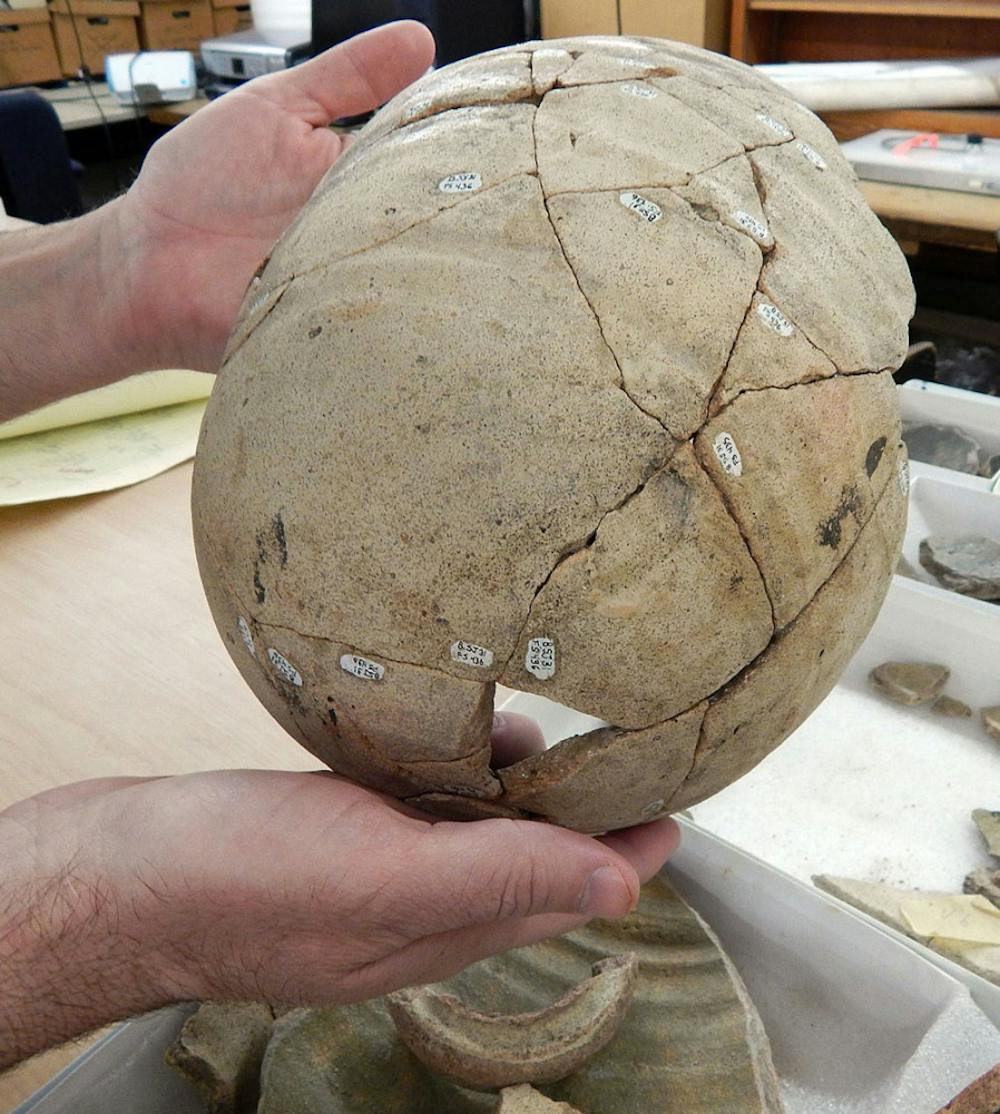An artifacts collection valued at $3.5 million to the Florida Museum of Natural History may bring new historical insights into America’s first Spanish colony.
UF archaeologists have decades of history digging at St. Augustine’s first settlement, founded by explorer Pedro Menendez in 1565. A donation by the land’s owners, the Fraser family, will allow the study of 97,000 artifacts found over the years. Artifacts will eventually join the permanent collection at the museum.
Gifford Waters, a collections manager for historical archaeology at the museum, said these artifacts, along with remnants of structures found at the site, can provide new understanding into how the settlers lived.
“We can look into how the Spaniards adapted to this new land and what they did to be ultimately a successful colony when all these other attempts had failed,” he said.
Thanks to years of careful protection by the Fraser family, the site has remained relatively uncompromised for centuries. Douglas Jones, director of the Florida Museum, said this is extremely rare for archaeological sites along the coast.
“You don’t have to travel around Florida very much to know most of the coastline and coastal properties have been developed or altered,” Jones said. “We’re very lucky that this site has been preserved in as great a detail as it has.”
Jones said the Fraser family realized they would rather have the artifacts available to the public than kept in a private collection.
“It’s a great win-win situation,” he said. “Knowledge increases, and the artifacts are cared for at the same time.”
A portion of the artifacts are already on display in St. Augustine as part of the “First Colony: Our Spanish Origins” exhibit. It will stay in St. Augustine through the end of 2015 and then will be on display at UF.
Waters said having the exhibit on campus will not only promote the history of Florida but also act as a valuable tool for training future archaeologists and historians.
Most people, he said, are taught that America began with British settlements like Jamestown and Plymouth Rock.
“Really, it began long before that with the founding of St. Augustine,” he said. “We want to get the true history of Florida and our nation out to the general public as much as possible.”
[A version of this story ran on page 3 on 3/12/2014 under the headline "Museum gets multi-million-dollar donation of artifacts"]
Collections manager Gifford Waters displays a Spanish olive jar reconstructed from artifacts found at the St. Augustine site.






